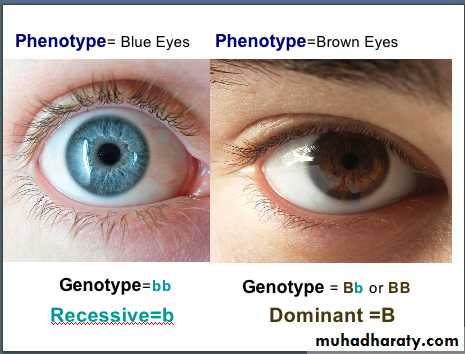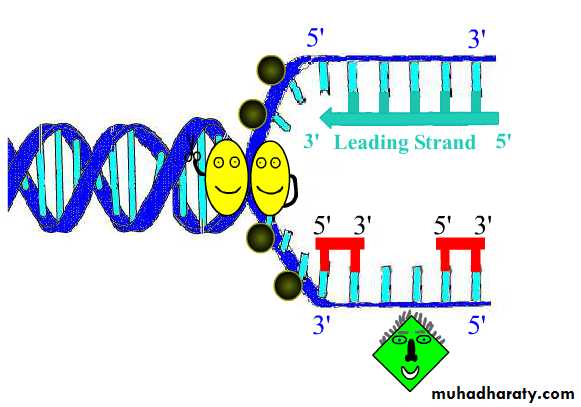Microbial Genetics
GeneticsGenetics: field of biology that studies genes and their inheritance
GeneSegment of DNA that encodes a functional product, usually a protein
GeneGene Vs. Genomes
Genome = All of the genetic material (DNA) in a cell.Prokaryotic cell has only one genome located in the nuclear area.
Eukaryotic cell has 2 genomes
Nuclear genome
Mitochondrial genome
If not specified, “genome” usually refers to the nuclear genome.
Gene Vs. Genomes
In human beings genes constitute only 3 % of the human genome.
The remaining 97 % of the genome – have yet no known functions! These regions are called non-coding regions.
Genome = Coding regions (genes) + non-coding regions.
Genetics Vs. Genomics
Genetics is the study of single specific, individual genes in isolation and their role in inheritancee.g. "monogenic" diseases such as sickle cell anaemia and cystic fibrosis, caused by an error in a single gene
Genetics Vs. Genomics
Genomics is the study of all the genes in the genome and the interactions among them and their environment (or non-genetic factors such as a person's lifestyle)Improve understanding of complex diseases such as diabetes, heart disease, and asthma
Genetics Vs. Genomics
Genetics is the study of single specific, individual genes in isolation and their role in inheritancee.g. "monogenic" diseases such as sickle cell anemia and cystic fibrosis, caused by an error in a single gene.
Genotype Vs. Phenotype
• "Genotype" is an organism's full hereditary information.
• "Phenotype" is an organism's actual observed properties, such as morphology, development, or behaviourGenotype Vs. Phenotype
Structure and Function of Genetic Material
Genetic Material = DNA or RNA• In the vast majority of organisms, genetic material is DNA (deoxyribonucleic acid)
• In some viruses , genetic material is RNA (ribonucleic acid)• Nucleotides
• Phosphate group• Pentose sugar
• Nitrogenous base
Genetic Material: Basic Building Units
Structure of DNADouble stranded (double helix)
Adenine (A), thymine(T), cytosine(C) and guanine(G)
"Backbone" is deoxyribose-phosphate
Strands held together by hydrogen bonds between AT and CG5’ to 3’ (strands are anti-parallel)
Complimentary base pairingA-T • G-C
Hydrogen bonds
DNA Replication
Bacteria have closed, circular DNAE. coli
4 million base pairs1 mm long (over 1000 times longer that actual bacterial cell)
DNA takes up around 10% of cell volume
DNA Replication
Helicases
Single stranded DNA binding proteinDNA Replication
Polymerase III
5’3’
DNA Replication
RNA Primase
1
2
3
Synthesizing leading strand starts by binding a short RNA segment (primer) to single DNA template by RNA primase in 5’ to 3’ direction.
DNA template
Finally, polymerase I, a cousin of polymerase III, replaces RNA primer with DNA.
DNA ReplicationPolymerase III finishes the building up of leading strand continuously in 5’ to 3’ direction
DNA Replication
DNA replication
In the synthesis of the lagging strand, the helix uncoiling occurs in the opposite direction to which polymerase III works. Therefore, the process has to be done in pieces (not-continous). These pieces are called Okazaki fragments.
RNA primers
DNA Replication




















